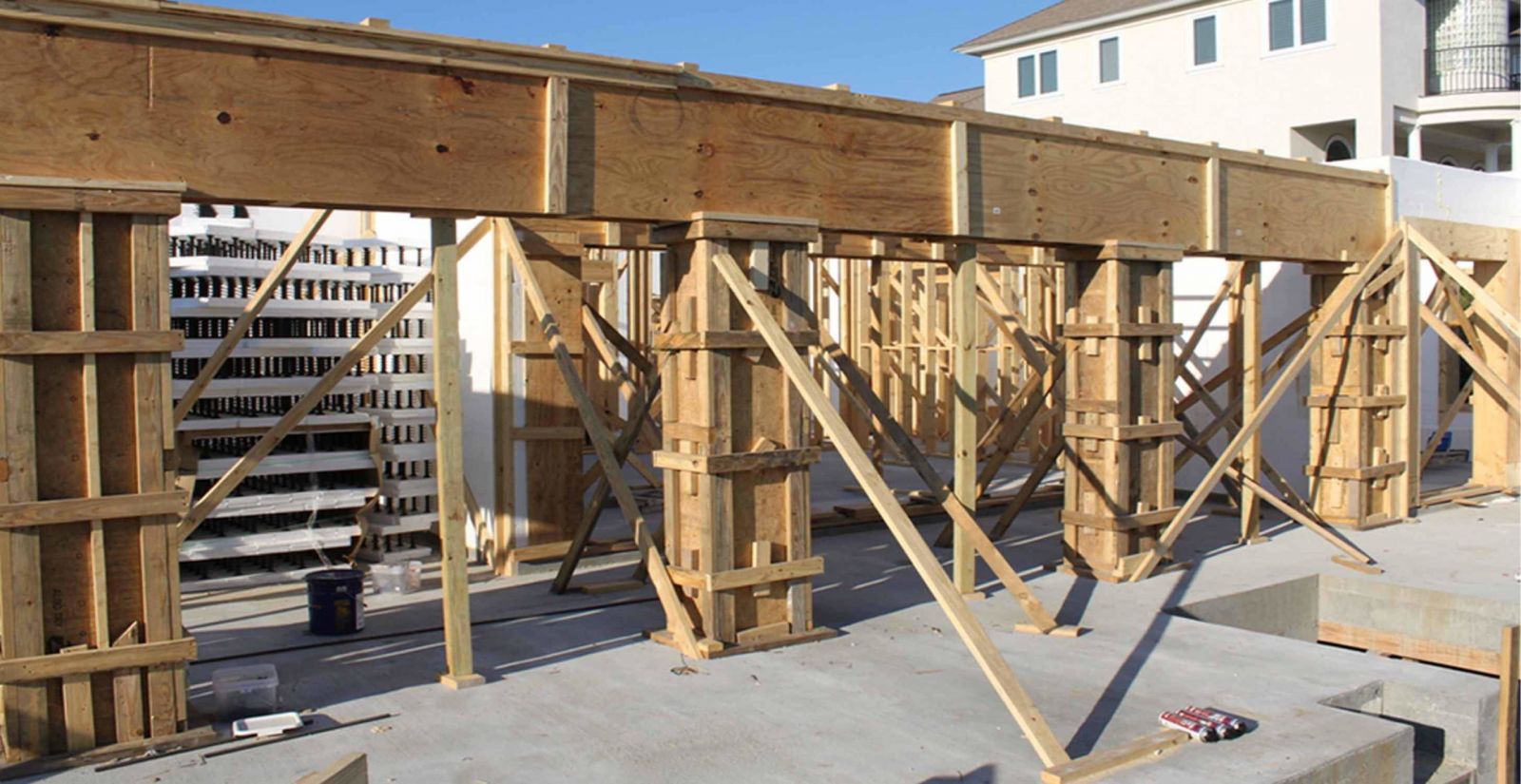The building formwork is a temporary support structure, which is produced according to the design requirements, to make sure that the concrete structure and components are developed according to the specified setting and geometric dimension, preserve their correct position, as well as bear the self-weight of the structure formwork and the exterior load acting on it. The function of formwork engineering is to guarantee the high quality of concrete engineering and construction security, speed up the construction progression and decrease engineering expenses.
The building formwork structure used in the construction of cast-in-place concrete formwork is mainly composed of three parts: panels, support structures and connectors. The plywood is the load-bearing slab that straight get in touches with the freshly poured concrete; the support structure is a temporary structure that supports the panel, concrete and construction tons, guaranteeing that the building formwork is firmly combined without deformation or damage; the connector is the connection between the panel and the support Fittings that connect structures into a whole.
Building formwork is the formwork and brace created by concrete putting. According to the nature of the material, it can be separated into building formwork, construction timber plywood, film-faced plywood, multi-layer board, double-sided substance adhesive, double-sided film-coated structure formwork, etc. Building formwork can be split into cast-in-place concrete formwork, pre-assembled formwork, huge formwork, leaping formwork, and so on according to the building and construction process conditions.
Combined steel formwork is a new type of formwork ‘substituting steel for wood’ with the advantages of strong flexibility, convenient assembly and also disassembly, as well as several turn over times in contemporary formwork innovation. It can be used in the construction of cast-in-place reinforced concrete structures. According to the design requirements, the large-scale formwork of beams, columns, wall surfaces and slabs is assembled, and the entire is raised in place, and also the method of bulk disassembly can also be used.
Building formwork has a vital influence on the quality assurance of the project in the construction of the task. The smoothness and flatness of the formwork surface will directly affect the flatness of the engineered concrete surface. For that reason, template production must be based on strict manufacturing procedure control, as well as the manufacturing process technology should be improved in the web links of resources, gluing, hot pressing and trimming. The specific production process is as follows:
- Cutting of raw materials: The raw materials are acquired by cutting layers of logs. The logs are cut and rotary cut in a horizontal plane according to a certain layer thickness, and also cut into timber layers with the same ratio according to the size of the formwork, and the wood layers are The publications externally ought to be eliminated, and also the magazines can influence the bonding fastness of the late glue.
- Drying out and also drying treatment: the timber layer after cutting and rotating cutting contains relatively large moisture. Therefore, or large-scale production, we require to dry it through a timber dryer. The dried out timber layer is relatively brittle, Consequently, it ought to be placed naturally for 2-3 days to make sure the toughness of the wood layer. In a small number of cases, we can use the sun for drying out.
- Gluing and layering treatment: A formed building formwork is glued together by multi-layer wooden boards, and a special adhesive rolling equipment is installed to pass the wooden boards through the adhesive loading machine, the front and back of the board will be equally covered with glue layer, as well as the wood board covered with glue layer will be placed on the surface of the formwork evenly, and evenly spread 6-10 layers (according to the demands).
- Hot pressing forming treatment: After the formwork layer is glued and laid, it is flattened by hot pressing process. In the traditional heating, boiler water is made use of for heating. The modern equipment area adopts electric heating. After squashing, the density of the structure formwork can be increased, and the forming is relatively normal, which improves the use quality of the formwork. The process of pre-pressing and afterwards hot-pressing is embraced to reduce the probability of slab dislocation, and after that hot-pressed with sensible pressure and temperature to ensure that each building formwork has excellent bonding strength and hardness.
- Paint spraying, side cutting and also product packaging treatment: After hot-pressing the building formwork, there will certainly be a little imbalance and irregular corners of the internal wood boards. Use a carving knife to cut the excess boards, and spray anti-corrosion paint to prevent deterioration Paint is an important factor to make sure the service life and storage time of building formwork. The building formwork has the advantages of light weight, high gravity, smooth surface area, as well as anti-corrosion.

